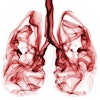In light of heightened public awareness about the need to lower CT radiation dose, more radiology practices are tackling the issue. They can learn from the example of a community hospital in Connecticut, which implemented a successful dose reduction program as described in the Journal of the American College of Radiology.
Imaging facilities are establishing more rigorous internal audits and analysis of imaging procedures, according to Dr. Jenifer Siegelman, from Yale School of Medicine, and co-author Dustin Gress, from MD Anderson Cancer Center. They are also becoming increasingly interested in improving patient safety through general quality improvement and developing a CT protocol review process (JACR, March 13, 2013).
"Radiologists, seeing themselves as stewards of radiation, just as infectious disease specialists are stewards of in-hospital antibiotic use, are leading efforts to reduce unnecessary radiation exposure," Siegelman and Gress wrote.
The authors measured the effectiveness of a CT dose optimization committee, estimated its costs, and outlined a radiation stewardship quality improvement initiative for the William W. Backus Hospital in Norwich, CT, a midsized community facility. A key feature of the committee was its multidisciplinary nature: Supported by the hospital's chief medical and executive officers, it was established and funded by radiologists, technologists, consulting medical physicists, and an administrator.
Without this broad support, developing radiation dose protocols can be challenging, according to Siegelman and Gress.
"Discussions of a facility CT protocol review process may break down quickly as stakeholders begin to understand the daunting scope of such a process," they wrote. "When administrators and radiology managers consider the resources and support that would be required internally, the prospect of adding physics support to the cost of the project may dampen enthusiasm further."
For the study, the committee established a process for CT dose protocol improvement and measurement of success. Over one month and for one scan type, head CT, the group monitored image quality, CT dose index volume (CTDIvol), and the exam repeat rate.
During the time period, committee members worked together to adjust the protocol as needed, according to the authors. The committee compared the protocol's effectiveness to national diagnostic reference levels after retrospectively reviewing the medical records of 100 consecutive patients, both before and after the committee's intervention. The study also included estimates of labor hours and wage resources.
| Distribution of committee member work hours | |||||
| Radiologist | 10 hours | ||||
| Physicist | 18 hours | ||||
| Technologist | 20 hours | ||||
| Administrator | 5 hours | ||||
| Clerical | 4 hours | ||||
The committee's efforts reduced the CT repeat rate from 13% to 0%, and scans that met the American College of Radiology (ACR) reference level for CTDIvol (75 mGy) improved by 34%. Forming the committee and developing and implementing the protocol took 57 person-hours, at an estimated labor cost of $12,488, according to Siegelman and Gress.
Measuring the direct benefits of the committee's work took an additional eight radiologist and eight technologist hours, for an additional cost of $1,640. Assuming four CT units, 30 CT protocols per unit, and similar staff requirements, Siegelman and Gress arrived at a total cost of $165,836 for one cycle of protocol evaluation.
The committee extended the culture of patient safety in radiation dose beyond the confines of individual technologists, radiologists, or physicists, according to Siegelman.
"We took our knowledge about patient safety to a whole new level," she told AuntMinnie.com. "Everyone got to participate. It's grassroots activism in the hospital setting."




















